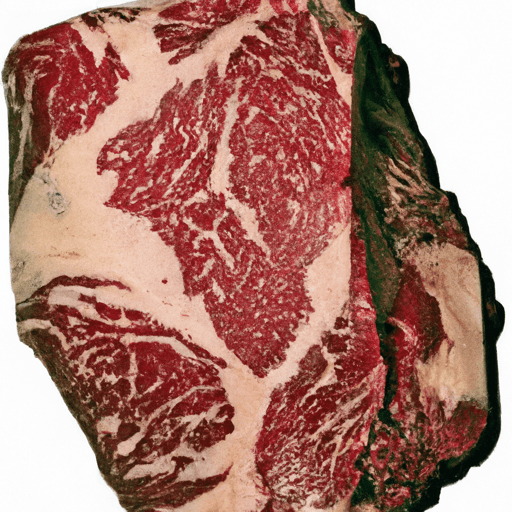Exploring the Magnificent Buffalo Ribeye: A Delight for the Senses
When it comes to indulging in a succulent, flavorful steak, the buffalo ribeye stands out as a unique and captivating choice. With its impressive taste, versatility in the kitchen, and fascinating history, the buffalo ribeye offers an experience that is truly unparalleled. Join us as we embark on a culinary journey, exploring the wonders of this delectable cut of meat.
Unraveling the Taste Sensation
Renowned for its rich and distinctive flavor, the buffalo ribeye boasts a taste that elevates any dining experience. With its deep, earthy undertones, this steak ensures a robust and satisfying feast for your palate. The combination of the buffalo’s grass-fed diet and well-marbled meat results in a deliciously tender and juicy texture that will leave you craving for more.
Versatility in the Kitchen
The buffalo ribeye’s versatility shines through in various cooking methods, making it an ideal choice for those seeking culinary exploration. Whether you prefer grilling, pan-searing, or broiling, this cut of meat adapts beautifully to each technique, providing a unique mouth-watering experience every time.
To unlock its full potential, season the buffalo ribeye simply with salt, pepper, and any preferred spices. This allows the natural flavors to shine while adding a touch of personal flair. Top it off with a savory compound butter or a drizzle of tangy chimichurri sauce for an extra burst of flavor.
Nutritional Value: A Healthy Indulgence
Aside from its delectable taste, the buffalo ribeye also offers a range of health benefits that make it an excellent choice for health-conscious food enthusiasts. This lean cut of meat is an excellent source of high-quality protein, essential amino acids, and important vitamins and minerals. Moreover, compared to beef, buffalo meat is typically lower in fat and calories while remaining equally satisfying.
Embrace the buffalo ribeye as a nutritious option that will nourish your body while fulfilling your culinary desires.
From Plains to Plate: A Brief History
Buffalo meat has long been a staple in the diets of Native American tribes who revered the buffalo as a symbol of sustenance and strength. The buffalo ribeye, encompassing the primal essence of this majestic animal, has been cherished throughout history for its deep connection to nature and culture.
Originally, buffalo thrived on the vast prairies of North America in large herds, roaming freely and sustaining the indigenous populations. Today, thanks to conscious conservation efforts, including responsible ranching practices, the buffalo population has rebounded, allowing us to savor its flavorful ribeye and contribute to the preservation of this extraordinary species.
Fun Facts about Buffalo Ribeye
- Buffalo ribeye is often referred to as the “filet mignon of the Great Plains” due to its tenderness and intricate marbling.
- Native Americans utilized buffalo hides not only for shelter and clothing but also as a medium for preserving and flavoring the meat. This preservation technique enhanced the taste of buffalo ribeye.
- Buffalo ribeye can be considered a sustainable choice since buffalo are raised without hormones or unnecessary antibiotics in a humane and natural environment.
Next time you’re seeking a remarkable dining experience, consider embarking on a gastronomic adventure with the buffalo ribeye. Its exceptional taste, versatility in the kitchen, health benefits, and historical significance combine to create a one-of-a-kind encounter that will leave you awe-inspired. Embrace the heritage and flavors of this iconic cut, and savor a truly unforgettable feast!
Buffalo Ribeye
Origin: Buffalo ribeye comes from the American bison (Bison bison), commonly known as the buffalo. Native to North America, the American bison once roamed the grasslands in vast herds, playing a crucial role in the survival of many indigenous communities.
Common Uses: Buffalo ribeye is a lean and flavorful cut of meat that is commonly grilled or pan-seared. Its tenderness and rich flavor make it a popular choice for steak enthusiasts. Buffalo ribeye can be enjoyed on its own or used as the centerpiece in various recipes where a tender and robust meat is desired.
Nutritional Benefits: Buffalo ribeye is often considered a healthier alternative to traditional beef ribeye due to its nutritional composition. It is lower in fat and calories while being higher in protein, iron, and B vitamins. Buffalo meat is also known to have a higher omega-3 fatty acid content compared to some other red meats.
Unique Properties: Buffalo ribeye has a slightly sweeter and more pronounced flavor than beef ribeye. It is known for its tender texture and marbling, which contributes to its juiciness. The meat is typically dark red in color and has a distinct rich aroma.
Historical Significance: Historically, Buffalo played a vital role in the lives of Native American tribes, serving as a primary source of food, clothing, and tools. The buffalo also holds cultural significance for many Indigenous communities as a symbol of strength, resilience, and sustainability. Today, the consumption of buffalo meat continues to honor these traditions while offering a unique and flavorful dining experience.




Use the share button below if you liked it.
It makes me smile, when I see it.